Parisian Walkways: Rue Paul Bert in the 11th Arrondissement
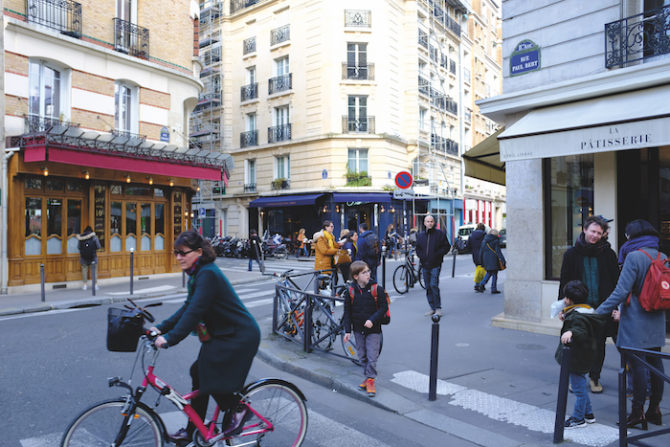
From the epicentre of the Revolution to a centre for epicurean revolution, this lively Parisian street has just one thing on the menu: quality. Jeffrey T Iverson stops by for a taste…
When you ascend the stairs out of the Faidherbe-Chaligny metro station, at first sight everything around you resembles a set of perfectly average Parisian crossroads. There are handsome Haussmanian buildings, brasseries and newsstands, and plenty of cars zipping down rue du Faubourg Saint-Antoine and rue Faidherbe. But what may appear to be just a pleasant, if unexceptional, corner of the capital today was, in the late 1700s, a veritable hotbed of innovation and freethinking. The heart of the largest furniture manufacturing centre in France, it was populated by a vast workforce of skilled craftsmen, who together made this neighbourhood the ground zero of the French Revolution.
In April 1789, months before the storming of the Bastille, rumours that a Faubourg Saint-Antoine luxury wallpaper manufacturer intended to lower his workers’ wages sparked the Réveillon riots, now considered by historians as the true beginning of La Révolution. Soldiers fired on the rioting workers, killing dozens and making it the bloodiest day until the final insurrection of August 1792, when the seditious brewery owner Antoine Santerre rallied the masses in his Faubourg brewery (then located just steps away from here at 210 Faubourg Saint-Antoine) before raiding the Tuileries Palace and bringing the monarchy to a violent end.
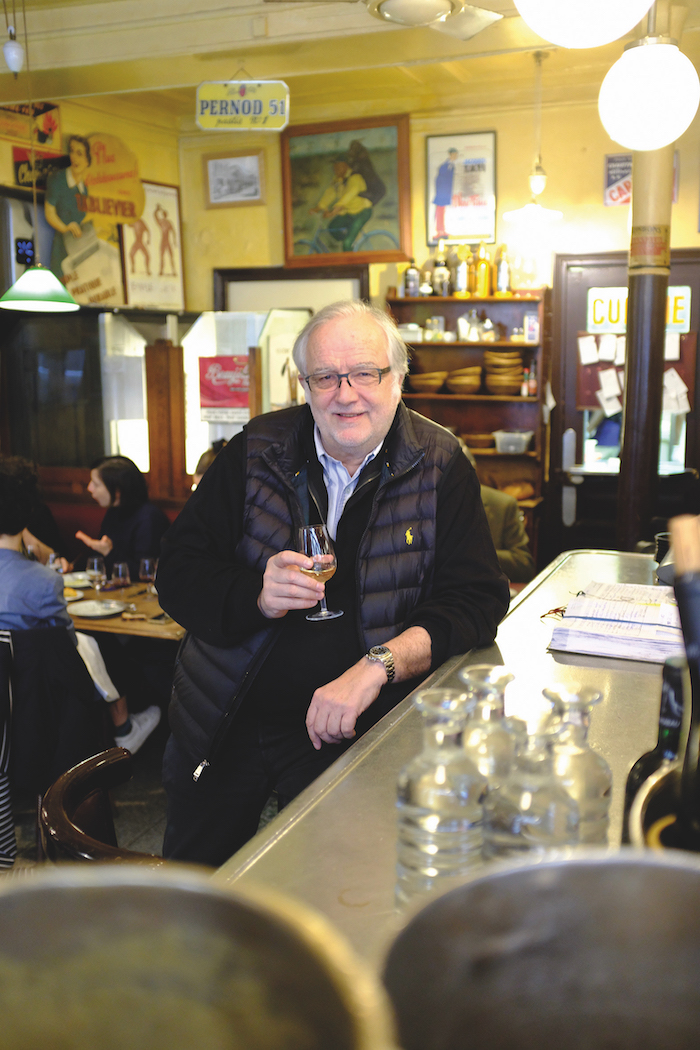
Bertrand Auboyneau and his wife set up Bistrot Paul Bert to honour the tradition of good, honest French cooking. Photo credit © Jeffery T Iverson.
So is that French appetite for un bon combat over a righteous cause now a thing of the past? For an answer, walk 50 metres up rue Faidherbe and you’ll arrive at a street where it seems a group of enlightened spirits has dug in for a last stand of their own, each defending noble traditions and working in their small ways to make the world a better place – rue Paul Bert. Not cabinetmakers but chefs and entrepreneurs whose restaurants and gourmet shops reflect a fervent appreciation for the heritage of France’s gastronomic past, and bold visions of the future of food and drink. “We vote three times day for the kind of world we want,” says Samuel Nahon, co-founder of Terroirs d’Avenir, provider of exceptional French produce to chefs and the epicurean public. “And we do it each time we eat a meal.”
So how did the delicious revolution of rue Paul Bert begin? This being Paris, naturally, it started with a bistro. As food critic François Simon writes in French Bistro: Seasonal Recipes, “The bistro is a culinary enclave in the 21st century, an institution in parenthesis… It speaks to our irrational appetites; it is a social sanctuary: somewhere to reflect, watch passers-by, shrug at calories, and mop up the sauce on our plates with good bread. Let the outside world march on in grey suits, they are slaves to their watches. The Bistrot Paul Bert in Paris illustrates every note of this urban hymn, this calm revolt, this rebellion that runs on salted butter.”
The Bistrot Paul Bert, at 18 rue Paul Bert, was opened in 1997 by Bertrand Auboyneau and his wife Gwenaëlle Cadoret. Auboyneau had worked in finance for 20 years, much of it in the Middle East, yet wanted to settle down again in his native city. “It was a radical life change,” he recalls. “But I’d always loved gastronomy and wine, and wherever I travelled I was always on the lookout for warm, welcoming, convivial places where the people made me feel they were happy to see me. I wanted to reproduce that in my own restaurant.” And for Auboyneau, nothing is more warm and welcoming than the classic French comfort food he grew up eating – feuilleté of calf sweetbreads with mushrooms, roast lamb with spring vegetables, filet mignon pepper steak with cognac cream sauce and pommes frites…
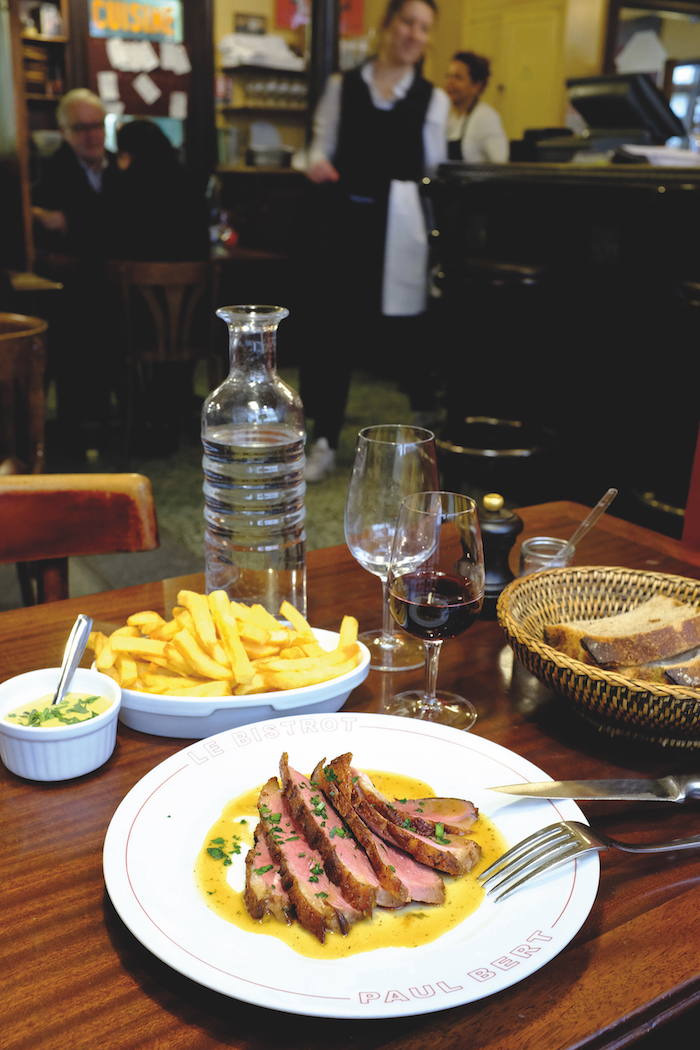
Lunch at Le Bistrot Paul Bert. Photo credit © Jeffery T Iverson
The couple couldn’t have picked a better moment to resurrect the Parisian bistro. In the 1990s, a new breed of chefs such as Michel Picquart and Yves Camdeborde were beginning to offer Parisians another kind of dining experience besides the ubiquitous brasserie and the pricey gastronomic restaurant. Their movement would become known as bistronomie – a contraction of “bistrot” and “gastronomie” – characterising small restaurants offering made-from-scratch cuisine at affordable prices yet with ingredients worthy of the best three-star tables.
For some chefs, bistronomie was a platform for creatively reinterpreting classic French recipes with modern techniques or novel ingredient combinations. But Auboyneau took the opposite approach, making Paul Bert a touchstone for authentic bistro fare. “People call us very old school, and I accept that!” he says. “I think that dishes of traditional French cuisine shouldn’t be questioned, we shouldn’t seek to improve or adapt them to modern palates, they should be prepared the way they’ve always been. Because in doing so we pass on a legacy, we preserve our heritage. I’ve tried to do that here.” Fuelled by this mix of generosity and rigour, his bistro has never stopped bustling. “The Paul Bert,” writes critic Simon, “continues to be a success because of its genuine respect for both its food and its diners. You will feel it as you enter and taste it in the crunch of the bread and the thickness of the entrecôte.”
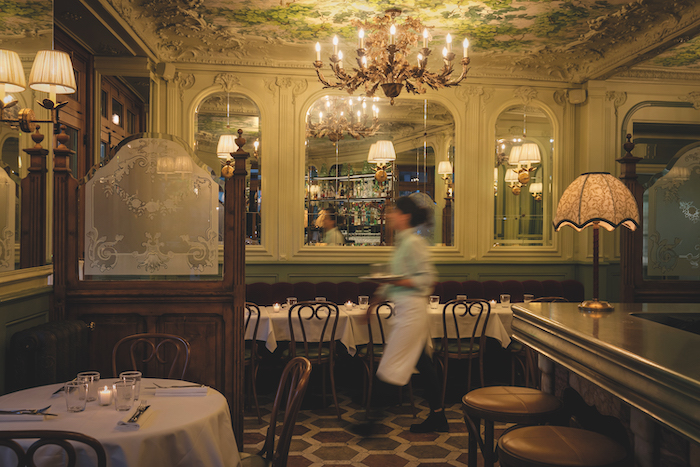
Belle Époque splendour at Le Chardenoux. Photo credit © Jeffery T Iverson
Star Quality
But the couple apparently weren’t satisfied just having a successful restaurant, and instead decided to help fulfil the unrealised potential of this “rather sad little street”. Only a year after opening Bistrot Paul Bert, Auboyneau and Cadoret created a seafood annexe next door at no.22 – L’Écailler du Bistrot, a haven for lobster and oyster lovers. Over the years they’ve continued expanding down the street, opening the creative small-plate restaurant Le 6 Paul Bert in 2012 and winebar Le Cave Paul Bert in 2015. But along the way, a new neighbour arrived who helped raise the profile of rue Paul Bert higher still – Cyril Lignac.
Lignac, famous for his popular French cooking shows, remembers his first visit to rue Paul Bert around 2008. He was already running a soon-to-be-Michelin-starred restaurant, but he wanted a second location. “I was looking for a bistro with a special allure, a patina of times past,” he says. “There aren’t many places like that in Paris. So when a friend took me to discover rue Paul Bert, at first I was just intrigued by this area far from my favourite neighbourhoods. But when I found this 100-year-old bistro, so full of history and emotion, I fell in love.”
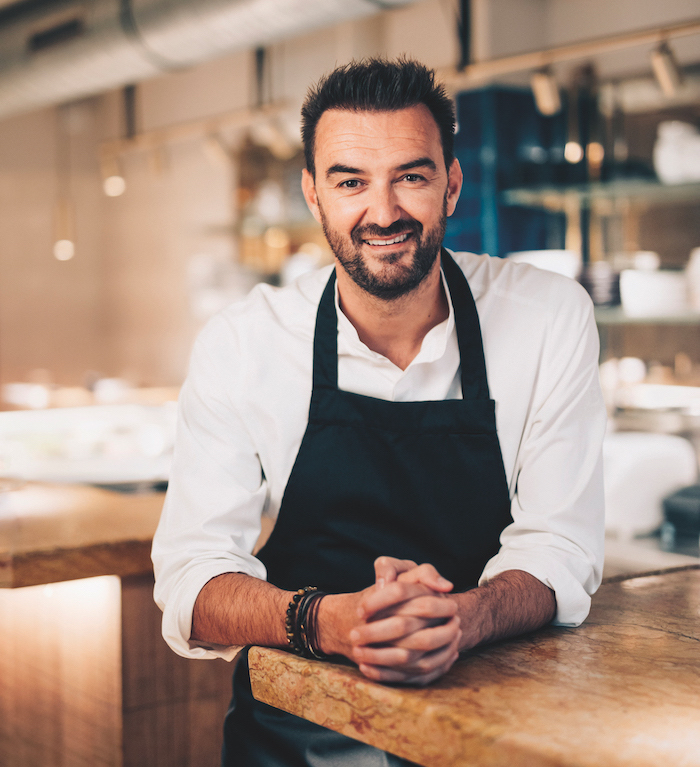
Cyril Lignac. Photo credit © Jerome Galland.
Lignac had discovered Le Chardenoux, founded in 1908 at 1 rue Jules Vallès at a crossroads overlooking rue Paul Bert, a once vibrant institution that had lost some of its élan but none of its pedigree. One of the last authentic Parisian bistros, it is classified a historic monument for its wrought iron marquee awning and art nouveau marble bar. “A jewel of the Belle Époque!” Lignac enthuses. The chef’s affection showed in his painstaking restoration of the splendid interior since taking it over in 2008. Only in 2019 did he refocus the menu around fresh fish and seafood and subtly refresh the décor – just “a touch of modernity, while preserving its soul of yesteryear”.
Much like Auboyneau, it seems Lignac was also too fond of this villagey quartier to be content with just one address. With that same mix of marketing savvy and love for France’s culinary history, in 2011 he and former Fauchon pastry chef Benoît Couvrand opened La Pâtisserie at 24 rue Paul Bert, where they have brought back into fashion once outmoded desserts like tarte au citron, Paris-Brest and baba au rhum. In 2016, they opened their first address for chocolate lovers, La Chocolaterie, just across the street at 25 rue Chanzy. Thanks in great part to Lignac and Auboyneau, rue Paul Bert is a sad little street no more. “This Village Paul Bert is in constant evolution,” says Lignac. “New addresses seem to be appearing every day, particularly food shops and restaurants, each bringing with them unique savoir-faire. It’s this blending that is so exciting, and is raising up the whole quartier.”
Today, a walk down rue Paul Bert leads you past numerous beloved restaurants, from Le Chardenoux and Le Bistrot Paul Bert, to the great Argentine restaurant Unico, at no. 15, and the cosy 25-seater Le Temps au Temps at no.13. But what has made this quartier a truly epicurean destination are all the impassioned shopkeepers you encounter here. There’s Sara Boukhaled, who elegantly blends French and North African culinary cultures with her reimagined corne de gazelle pastries at Maison Gazelle (2 rue Jean-Macé). At 16 rue Chanzy, Stéphane Premat of L’Univers du Fromage celebrates France’s rich diversity of raw milk cheeses, proudly offering such exceptionally rare examples as the Bleu de Termignon, made by only four Alpine farmers at an altitude of 2,300m. Yet at 5 rue Paul Bert you’ll also meet Mary Jähnke, of Jay and Joy, the first vegan cheese producer in France, whose little workshop boutique now supplies stores across the country with her creations made from almonds, cashews and sunflower seeds.
- Ham’s has an exceptional collection of meats from around Europe. Photo credit © Jeffery T Iverson.
- Rare cheeses at L’Univers du Fromage. Photo credit © Jeffery T Iverson.
Artisan Spirit
“In France, people have become more and more demanding in terms of the sustainability, traceability and the intrinsic quality nutritional value of the food they buy,” says Jean-François Le Goff, founder of Ham’s, an exceptional ham shop which opened at 21 rue Paul Bert in 2018. “That, and our basic need for human connections, is attracting people back to their neighbourhood stores again.”
Le Goff speaks passionately of the farmers who in recent years have saved from extinction such noble races of pigs as the Noir de Bigorre of southern France, the Kintoa of the Basque country, or the Cul Noir of the Limousin. Meanwhile, Samuel Nahon, co-founder of Terroirs d’Avenir, which sources heirloom fruits and vegetables and other fine foods from small French farms, recounts stories of wheat farmers who abandoned genetically modified varieties in favour of ancient, forgotten varieties like Touzel, Tréziers or Barbu. Thanks to them, baker Jonathan Herbster creates fabulously flavourful breads for the Terroirs d’Avenir Boulangerie at 8 rue Paul Bert, just across the street from the Terroirs d’Avenir Epicerie at no.5.
- Terroirs d’Avenir. Photo credit © Jeffery T Iverson.
- Terroirs d’Avenir. Photo credit © Jeffery T Iverson.
“As consumers we’re thinking more now about the repercussions of our daily choices,” reflects Nahon. “Society has tested the limits of humanity and our planet, with big agro-business and hypermarket chains. But now we’re realising that small is beautiful!”
That could well be the maxim of the wine shop Crus et Découvertes at 7 rue Paul Bert, where since 2003 Mikael Lemasle has been advocating for pesticide-free viticulture and wines unadulterated by preservatives and laboratory yeasts. “When I look at what’s happened to our street over the last 15 years, with the arrival of many small artisans trying to perpetuate a tradition, it reminds me of what has impassioned me in my own profession,” he says. “It’s about finding myself at the crossroads of all these critical issues at play in our society, and working to offer another path for these small, free-spirited artisan wineries.” It would seem that path has a name: rue Paul Bert.
Boutiques, Galleries & Restaurants
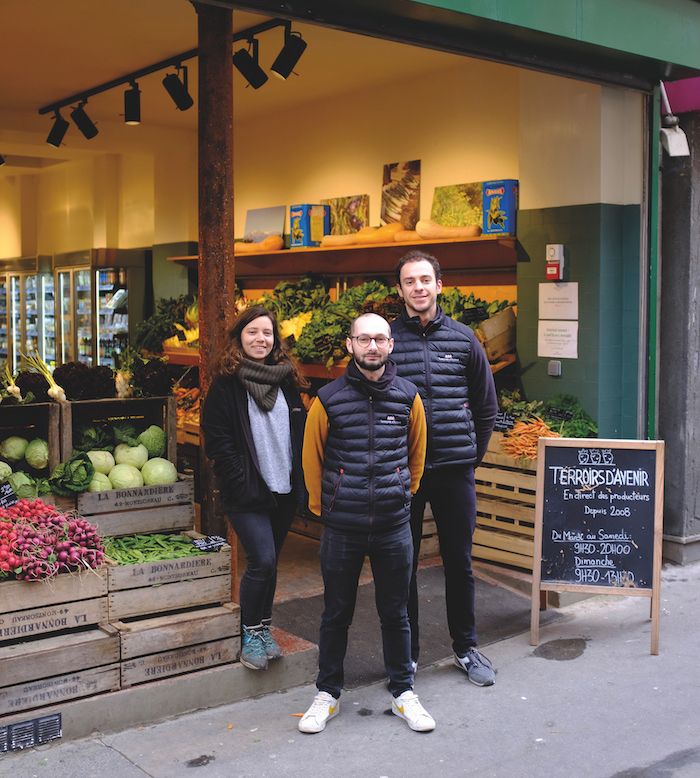
Épicerie Terriors d’Avenir. Photo credit © Jeffery T Iverson
ÉPICERIE TERROIRS D’AVENIR: 5 rue Paul Bert
Tel. +33 1 84 79 88 27
This epicurean grocer from the founders of Terroirs d’Avenir, suppliers of exceptional produce and Slow Food certified gourmet items to many of France’s top chefs, gives foodies the chance try for themselves the heirloom fruits and vegetables used in starred restaurants, from Argenteuil asparagus and Pontoise cabbage, to Brie de Meaux cheese and Grégory Spinelli’s Parisian mushrooms.
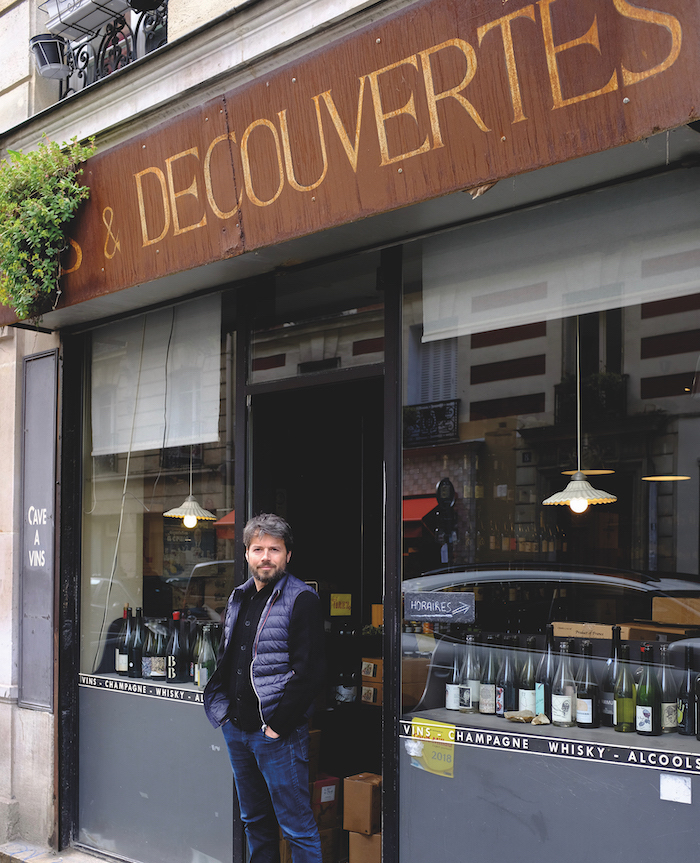
Crus et Découvertes. Photo credit © Jeffery T Iverson
CRUS ET DÉCOUVERTES: 7 rue Paul Bert
Tel. +33 1 43 71 56 79
This small wine shop is bursting at the seams with fabulous natural wines lovingly curated by Mikael Lemasle. The former wine agent is one of the rare Parisian cavistes who devote the patience and capital to age wines to maturity before releasing them. At a time when vin naturel has gone mainstream, Lemasle offers oenophiles the surety of a sulphite-free wine at its aromatic peak.
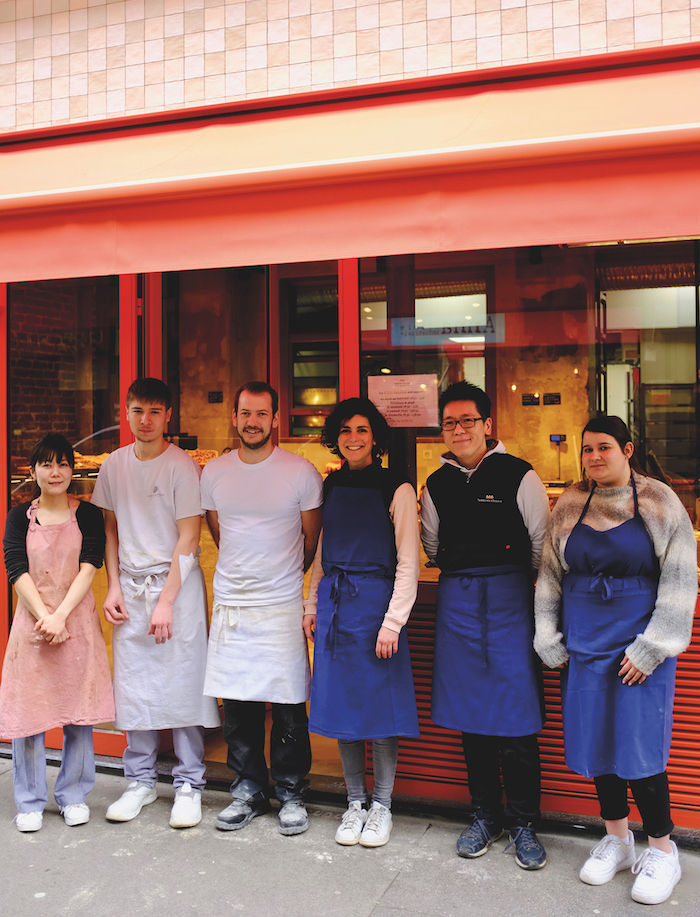
Boulangerie Terriors d’Avenir. Photo credit © Jeffery T Iverson
BOULANGERIE TERROIRS D’AVENIR: 8 rue Paul Bert
Tel. +33 1 84 79 88 25
A bakery like no other, created by the company famous for helping resurrect heirloom fruits and vegetables in France, and here doing the same for rare, ancient wheat varieties. The divine crust and aromas of breads like the “Le Paul Bert” sourdough – made from three forgotten wheat varieties – alongside perfect croissants show these young bakers have talent to boot.
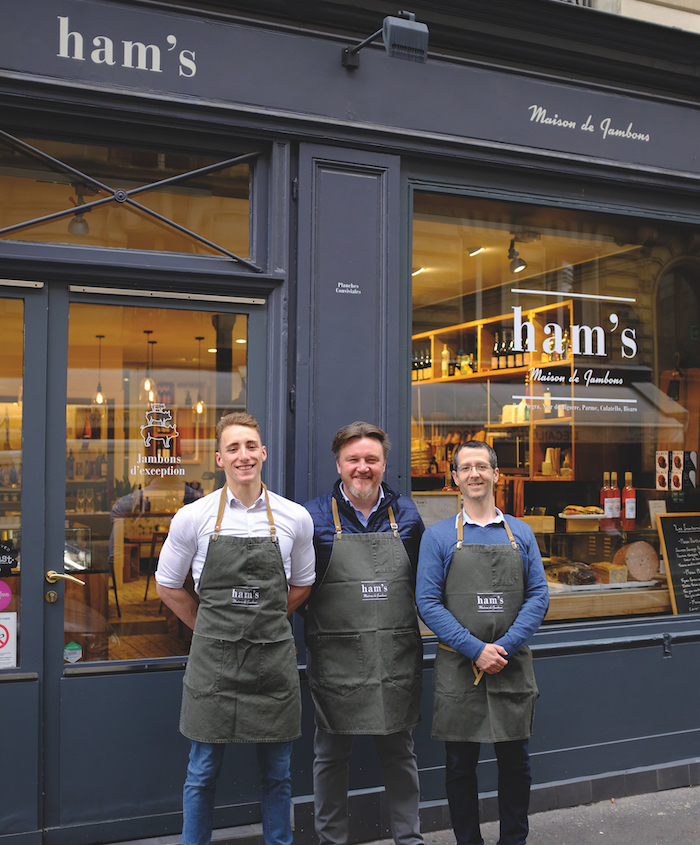
Ham’s. Photo credit © Jeffery T Iverson
HAM’S: 21 rue Paul Bert
Tel. +33 9 61 68 70 35
The English name on the door sets the international tone of this elegant shop and tasting room celebrating the most exquisite and respectfully raised hams of Europe. Travel on your taste buds from France with Catalan and Aveyron saucissons and mouthwatering 40-month aged Noir de Bigorre ham, to Italy with lovely Culatello di Zibello ham, and on to Spain with divine 43-month Pata Negra Ibérico.
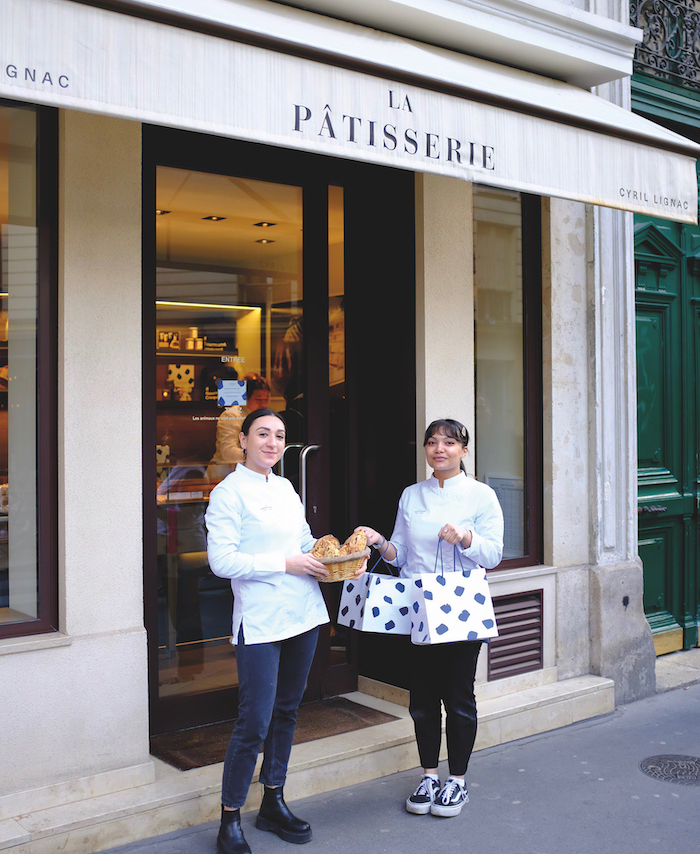
Ham’s. Photo credit © Jeffery T Iverson.
LA PÂTISSERIE CYRIL LIGNAC: 24 rue Paul Bert
Tel. +33 1 42 96 95 54
What do you get when France’s favourite celebrity chef and the former head of pastries for the gourmet food company Fauchon come together? La Pâtisserie Cyril Lignac, a bread and pastry shop anchored in the great French dessert tradition, offering heavenly takes on classics like tarte au citron, Paris-Brest and baba au rhum, as well as delicious breads, cakes and other impossible-to-resist gourmandises.
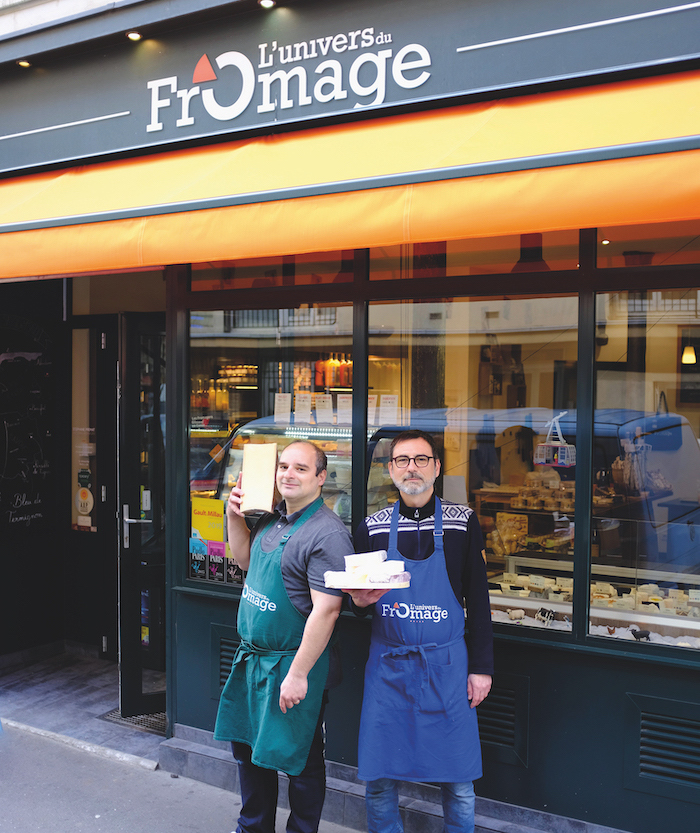
l’Univers de Fromages. Photo credit © Jeffery T Iverson.
L’UNIVERS DU FROMAGE: 16 rue Chanzy
Tel. +33 9 81 85 51 76
As the name of this charming shop suggests, cheesemonger Stéphane Premat loves the entire universe of cheese, and presents up to 120 varieties from all across France and Europe. But his special passion is for the fabulously diverse cheeses of the Savoie – his father’s homeland – and he offers up to 30 of them, including the rarest cheese in France: the Bleu de Termignon, made by only four Alpine farmers.
Read the other articles in the Parisian Walkway series here.
From France Today magazine
Share to: Facebook Twitter LinkedIn Email
More in retail, shopping tips
Leave a reply
Your email address will not be published. Required fields are marked *

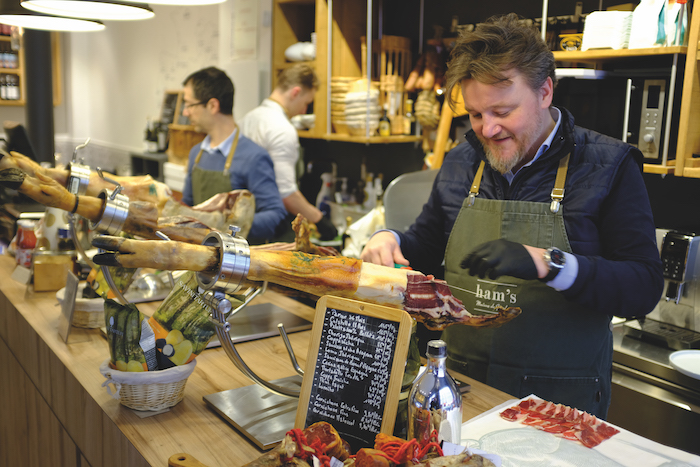

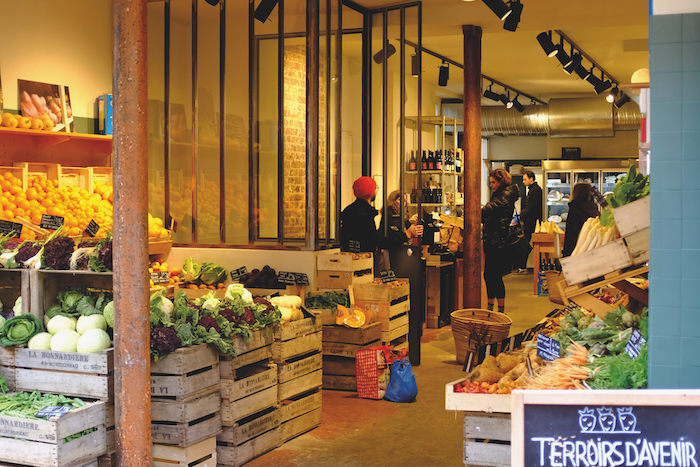
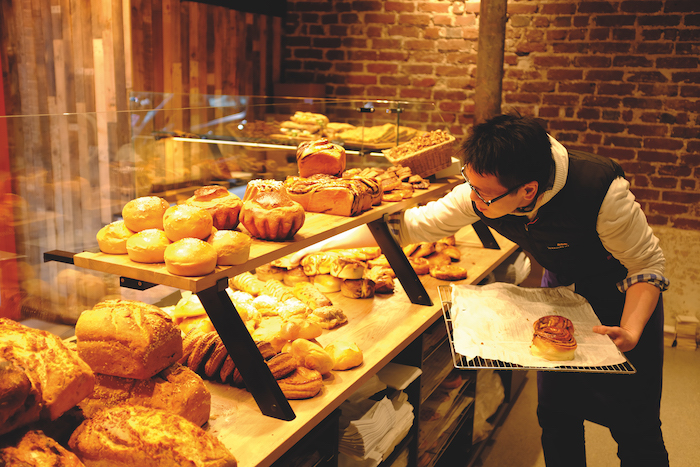



REPLY